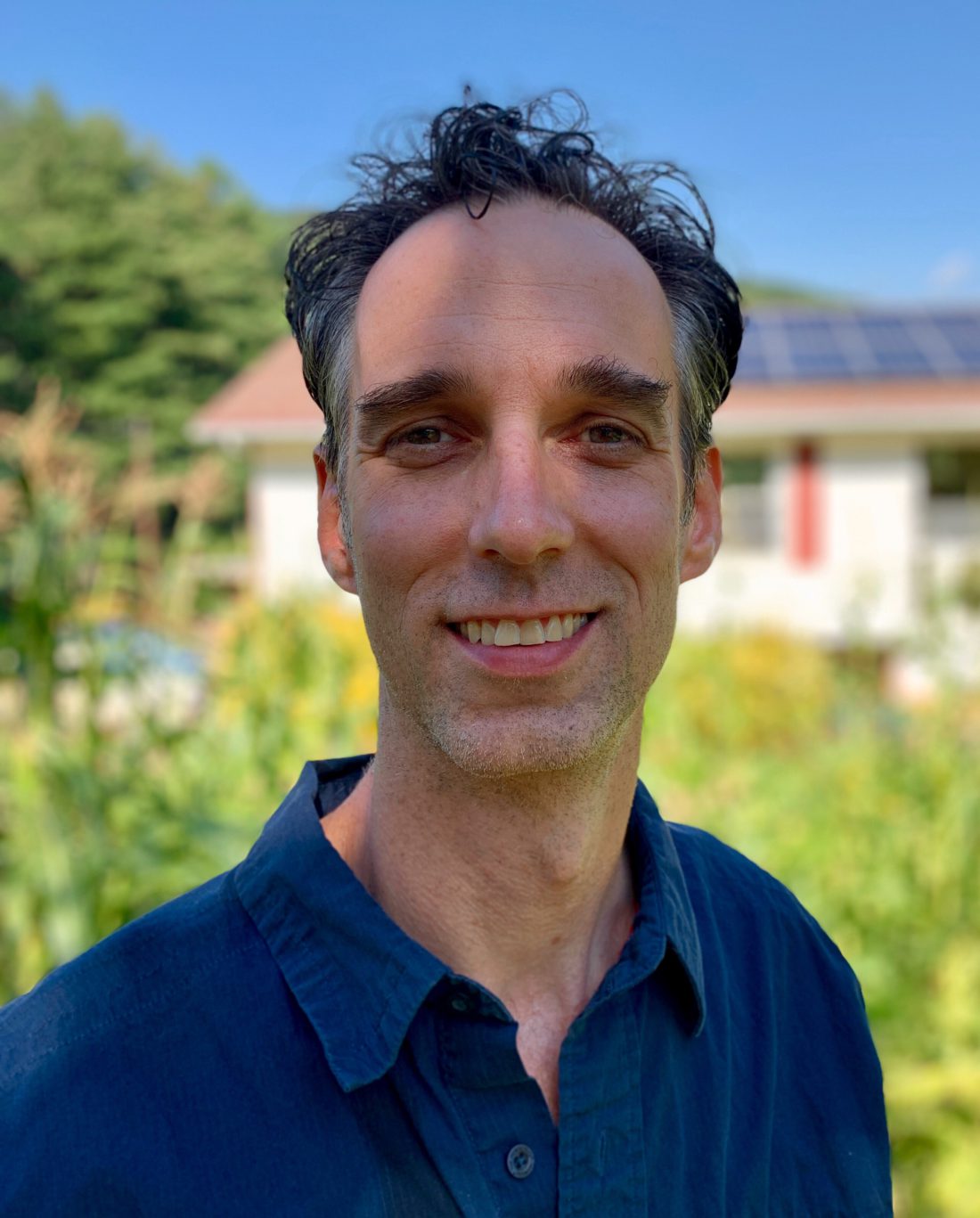Most people see a block of concrete as an inert object: solid, silent, motionless. But Sam Ruark-Eastes, executive director of Asheville-based nonprofit Green Built Alliance, sees it in an entirely different way.
“Concrete is a highly energy-intensive product to create,” says Ruark-Eastes. “It also emits carbon throughout its lifetime, thus contributing to climate change. If you multiply that block by the millions produced by industry, you can see why using natural building materials is a far more sustainable way to go.”
Having worked in the field of sustainability for 20 years, Ruark-Eastes knows a thing or two about the latest alternatives to concrete. He and a number of guest presenters will share that knowledge with the public through the Green Built Alliance’s Regenerative Design Workshop Series, which includes seven learning opportunities taking place at Lenoir-Rhyne University and A-B Tech through Wednesday, Dec. 11.
Ruark-Eastes is particularly excited to host Canadian sustainable building expert Chris Magwood, who will offer three workshops featuring Hempcrete at A-B Tech Friday-Sunday, Sept. 6-8. This cementlike material combines the inner woody cores of hemp stalks, also known as hurds or shives, with lime and water and can be used for construction and insulation.
“Folks who sign up for any of his workshops will learn how this sustainable material — now legal to grow in North Carolina, and gaining in popularity worldwide — actually absorbs carbon, not only during [hemp’s] growth cycle as plants, but as a material in a building,” Ruark-Eastes says. “This is a beautiful and renewable solution to the climate crisis.”
Outside in
In addition to Magwood’s workshops, other sessions include “Exploring Indoor Air Quality” with local designers Sean and Laura Sullivan, “Designing with Biophilia” with Boston-based architect and educator Liz Calabrese, “Energy Efficiency for Everyone” with Ruark-Eastes and “Ecological Site Preparation and Long-Term Resilience” with Brandon Greenstein of Asheville’s Organic Growers School. If there’s a common thread to the series, it’s how designers can learn from the patterns of nature in creating human environments.
That’s especially true, Ruark-Eastes says, for Calabrese’s workshop on biophilic design. Defined as “love of nature,” he explains, biophilia is a guiding principle for designers to connect the interiors of homes and buildings with the exterior world.
“Adding indoor plants, choosing rounded design features over right angles and paying attention to window placement can all help soften, smooth out and brighten our interior spaces, thus putting us more at ease — as nature so naturally does,” Ruark-Eastes says.
In his own workshop, Ruark-Eastes will demonstrate how to improve home energy efficiency while increasing comfort, saving money and reducing environmental impacts. Homeowners might boost layers of insulation around hot water pipes, for example, taking a page from natural strategies such as a sheep’s use of wool to retain heat and reduce energy consumption.
Some of Ruark-Eastes’s topics will include obtaining rebates and incentives for energy efficiency work, hiring local professionals to help on bigger jobs and paying for solar energy. “My intent is to make home energy efficiency accessible to everyone,” he says, “including those on a limited budget.”
Beyond net zero
The workshop series supports Green Built Alliance’s larger effort to promote sustainability in the North Carolina building industry. Earlier this year, the nonprofit updated its Green Built Homes certification program to incentivize builders for incorporating elements of regenerative design into their projects. While the program has certified over 1,700 houses (including 32 net-zero energy homes) since its 2004 beginnings, Ruark-Eastes says the update represents a major step forward.
“We focus on small to medium-sized homebuilders who want to build and design homes that will integrate with, and have a net-positive impact on, the surrounding natural environment — what we refer to as regenerative design,” Ruark-Eastes explains.
Maggie Leslie, who oversees the Green Built Homes program, points out that while net-zero energy homes merely have a neutral impact on the environment, regenerative homes produce more benefits than their environmental costs.
“A truly regenerative home will also take into consideration more than just energy. For example, this type of home would capture and treat all of its own water on-site so that water leaves the site cleaner than it came,” Leslie says. “The home would also use local, nontoxic materials while building a connection between the occupants and the world around them through biophilic design.”
Heath Moody, who chairs the Construction Management Technology, Building Science and Sustainability Technologies program at A-B Tech, says his school has partnered with Green Built Alliance over the past 10 years to understand industry trends and connect students with employment opportunities. Pushing the envelope with ideas such as Hempcrete and regenerative design, he says, will be critical to making progress on the issues of climate change and social justice.
“We won’t get there if we don’t step up and demand the changes we need to sustain humanity on this planet. The global science community has spoken loudly, and it’s clear we’re facing the biggest challenge humans have possibly ever faced,” Moody says. “The only thing standing in the way is ourselves.”
More details and registration information for the Regenerative Design Workshop Series are available at avl.mx/6gr.




more building with hemp and bamboo products is fast approaching …